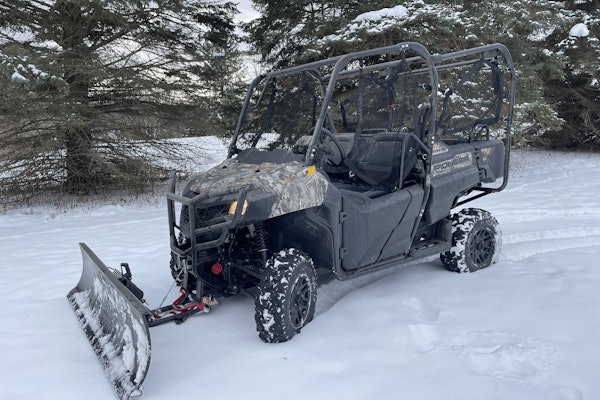There are three different types of machines that put workers in the air; each offers unique strengths and limitations. We asked Howard Kaplan, vice president, product parent for aerial work platforms, at JLG Industries to explain the differences in a way that helps you choose the right aerial work platform for every application.
Weight capacity
Most platforms for articulating or telescoping boom lifts are rated for 500 pounds of unrestricted capacity. Some manufacturers offer restricted capacities of 1,000 pounds that cover 75 to 80 percent of their reach or work envelope with the limit being reach-to-weight ratios in the extreme horizontal position. “Remember,” says Kaplan, “that 500 pounds is just two guys and maybe a few tools or one guy and some welding equipment.” Scissor lifts go straight up without reaching over the sides and thus offer considerably more capacity for holding the weight of workers, tools and materials. For scissor lifts 500 to 1,000 pounds is typical for the narrow (30-to 46-inch wide) chassis slab scissors; while the wider platform, RT-style scissors have capacities ranging from 1,000 up to 2,500 pounds.
Advantage: Scissor lifts.
Horizontal reach
For straight out horizontal reach you can’t beat a telescoping boom. Horizontal reach is especially useful when rough terrain or materials stacked on the ground make it difficult to get up close to the side of a building or structure. Articulating booms also have good reach, but an articulating joint isn’t as strong as telescoping boom segments and, all other things being equal, articulating boom models have less straight reach than telescoping machines. “An 80-foot telescopic boom would have almost 70 feet of horizontal reach,” Kaplan says. “An 80-foot articulated boom would have more like 50 feet of horizontal reach.”
Advantage: Telescoping lifts.
Versatility/dexterity
The ability of an articulating model to position boom segments in something other than a straight line can be a huge asset in certain types of work. “Articulating units use their pivot joint to get up and over an obstruction, then take the boom down at an angle,” Kaplan says. “And if you put a jib on the end you can almost curl it back under.” Telescoping booms can be fitted with jibs for certain applications, but those will only give you 6 to 10 feet of articulation, though again at the end of the boom where in many applications it is the most useful for positioning.
Advantage: articulating lifts.
Fuel/power sources
The choices are electric power for articulating and scissor lifts, or combustion engines – including propane, diesel, gasoline and dual fuel – for all three types. Most contractors prefer diesel, because it’s widely available on most jobsites, says Kaplan, or dual fuel because you can switch to propane when working inside and generate fewer emissions. Dual fuel burns either propane or gasoline at the flip of a switch – same engine, different carburetion. Electric power is favored for work inside plants and factories or in areas on a job site lacking ventilation since electric machines generate zero emissions. Combustion-powered machines generally have faster function speeds and greater drive train power. Also, refueling takes minutes not hours; so if the environment dictates electric drive units it would be wise to make sure the model you choose has enough power to complete two shifts and recharge overnight.
Advantage: Use what best suits your needs or jobsite requirements.
Prices
Price reflects the features (capacity, power source, reach) needed to fit the application. Scissor lifts sell for less than boom lifts because they work only vertically while boom lifts provide a much larger work envelope that accesses both vertical and horizontal work areas. Electric boom lifts within the same height class will sell for less than combustion models with a corresponding drop-off in performance. But unlike in the past, today you’ll not find significant differences in prices between articulating and telescoping boom lifts within the same height category and power sources.
Advantage: Tie.










